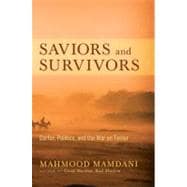
| Acknowledgments | p. ix |
| Map | p. xii |
| Introduction | p. 3 |
| The Save Darfur Movement and the Global War on Terror | |
| Globalizing Darfur | p. 19 |
| The Politics of the Movement to Save Darfur | p. 48 |
| Darfur in Context | |
| Writing Race into History | p. 75 |
| Sudan and the Sultanate of Dar Fur | p. 109 |
| A Colonial Map of Race and Tribe: Making Settlers and Natives | p. 145 |
| Building Nation and State in Independent Sudan | p. 171 |
| The Cold War and Its Aftermath | p. 206 |
| Rethinking the Darfur Crisis | |
| Civil War, Rebellion, and Repression | p. 231 |
| Conclusion: Responsibility to Protect or Right to Punish? | p. 271 |
| Notes | p. 301 |
| Select Bibliography | p. 357 |
| Index | p. 375 |
| Table of Contents provided by Ingram. All Rights Reserved. |
The New copy of this book will include any supplemental materials advertised. Please check the title of the book to determine if it should include any access cards, study guides, lab manuals, CDs, etc.
The Used, Rental and eBook copies of this book are not guaranteed to include any supplemental materials. Typically, only the book itself is included. This is true even if the title states it includes any access cards, study guides, lab manuals, CDs, etc.
Excerpted from Saviors and Survivors: Darfur, Politics, and the War on Terror by Mahmood Mamdani
All rights reserved by the original copyright owners. Excerpts are provided for display purposes only and may not be reproduced, reprinted or distributed without the written permission of the publisher.